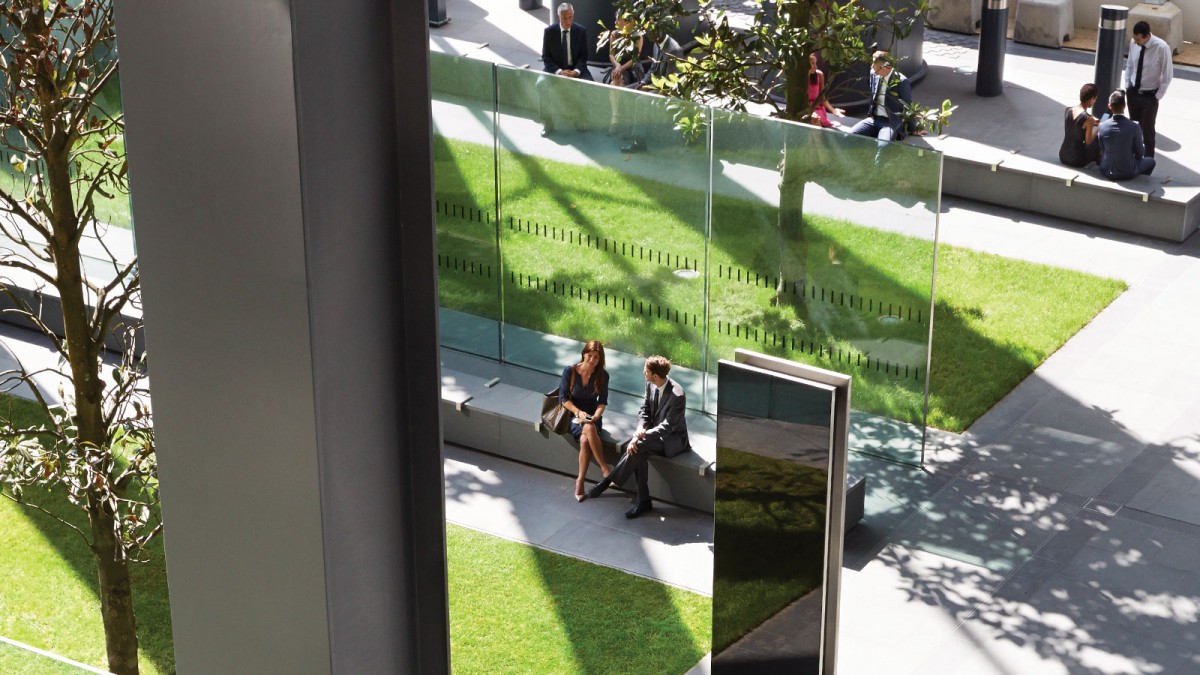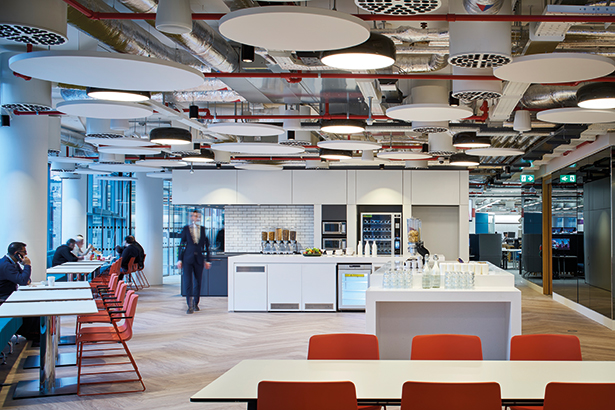Into Occupancy
For the transition from a construction project to an occupied space to be smooth and successful, it must be considered as a process and not a single point in time. Building on effective Completion and Handover, there exists considerable opportunity for the various project stakeholders to continue engagement into the occupancy phase to help delivery sustainability Benefits for all.
1. Undertake a Close Out Review
It is likely that some of the sustainability requirements and KPIs set out in the lease and/or Requirements Brief cannot be fully assessed prior to first occupancy. This could be due to inherent delays in gathering construction stage evidence for a green building assessment, or because the requirements inherently require an element of user testing and time to pass, e.g. seasonal commissioning of HVAC systems.
Principles for delivering a close out review
1. Gather Feedback
All parties involved in the fit-out process should be invited to feedback on all stages set out in this toolkit, running from early engagement, through setting legal agreements, design, procurement, delivery and handover.
The sharing and communication of findings should be agreed in advance. This may include considering how each stakeholder organisation disseminates the learning internally. The owner and occupier may also consider wider communication opportunities to share and celebrate case studies with the industry. This will help ensure best practise and lessons learnt are shared for wider benefit.
2. Hold a Review Workshop
The occupier and owner may want to consider running a workshop at an appropriate point in early occupancy to review and conclude all remaining matters related to meeting the Requirements Brief. The contractor and design team(s) should be encouraged to attend.
Items to cover…
- Confirmation that any sustainability requirements agreed within the lease or features aspired to separately as part of the project have been met. This may include providing certificates to demonstrate that the fit-out meets a required environmental standard rating (e.g. BREEAM, SKA, WELL etc.)
- Evidence of any required seasonal commissioning having taken place on relevant systems, such as BMS and HVAC. Such recommissioning helps ensure that systems are effectively balanced and controlled to be annual variations. Where occupancy is phased in a newly fitted-out space, recommissioning can help configure climate control systems to meet the contemporary occupancy density and patterns.
- Feedback gathered from key stakeholders, identifying any clear trends or major concerns raised.
2. Continue to Review Performance In-use
Ideally, ongoing engagement between the owner, property manger and occupier on sustainability should continue to build and develop throughout the term of the lease.
Research demonstrates that there is very often a ‘performance gap’ between the design intent and the actual performance of the building during operation. This gap typically increases over time and is most commonly observed in energy consumption, water use and CO2 emissions. However, similar gaps can also be found in terms of: indoor air quality, thermal, visual and acoustic comfort. All of these parameters can impact directly on operational costs, as well as building user heath, wellbeing and productivity. It is therefore important for owners. property managers and occupiers to continue to collaborate in monitoring and reviewing performance in-use. This can help to ensure planned Benefits continue to be realised.
Providing detailed guidance on integrating sustainability principles during occupancy is not within the scope of the Toolkit, however, the following principles and guidance is highlighted to support a clear and constructive framework for dialogue and communication.
Sustainable Occupancy Principles
1. Integrate Sustainability within Property Management Regimes
Property Managers have a key role to play in ensuring that buildings are managed in a way which reduces adverse environmental impacts and identifies opportunities for improvement.
They are the conduit linking owners and occupiers and are ideally placed to appreciate and promote the environmental aspirations of both parties and facilitate cooperation. The policies and procedures delivered by a property manager for a building can have a dramatic effect on how efficiently the property is run and the level of comfort experienced by the occupier.
This BBP Managing Agents Sustainability Toolkit and Managing Agents Partnership Integrating Sustainability into Property Management Services: Core Provisions provide details on the range of sustainability services that an owner could consider requiring its property managers to provide. It also provides guidance for property managers on how best to meet such requirements.
2. Carry out a Post Occupancy Evaluation
Post-Occupancy Evaluation (POE) is the process of obtaining feedback on a building's performance in use from the building end users and other key stakeholders, and is becoming an increasingly valuable tool in providing feedback on fit-out projects. It typically involves both qualitative (survey questionnaires and interviews) and quantitative (monitored environmental parameters) assessment.
A POE is typically first carried out after 12 months of occupation, and can be reviewed periodically. Occupiers should consider working with a suitable independent consultant to complete a POE scope tailored to their space. A typical scope may cover:
- A benefits realisation review
- Observations on space use and occupancy patterns compared against design assumptions
- Feedback on building user comfort and satisfaction.
- Utility consumption compared against design assumptions
- Environmental conditions e.g. lighting, acoustics, temperature, ventilation and air-quality, and comparison with design assumptions
- A review of ongoing maintenance, occupancy costs and whole-life costs
- The effectiveness of the space planning, movement, access, servicing etc.
- The effectiveness of building management, including communication, responses etc.
3. Establish a Seasonal Commissioning Programme
Seasonal commissioning in the first 12-18 months of occupancy may be undertaken by the main contractor as part of a comprehensive Handover process. However, the property manager or occupier (dependent on who has responsibility) should consider retaining checks.
The process involves the periodic re-commissioning of building systems that are affected by seasons changes e.g. heating systems in winter and mechanical cooling systems in summer, as well as motorised windows and active solar-shading devices. It ensures these systems continue to operate efficiently and meet occupier needs thus maintaining and improving occupier comfort. See Commissioning for further information.
4. Implement an Effective Communication Strategy
To ensure desired outcomes are delivered and performance does not deteriorate overtime it is important all stakeholders consider what KPIs require monitoring, to whom information should be communicated to, and how this can be best communicated.
All building users should understand the activities within the property aims to limit its environmental impact, contribute to the local community and supports health, wellbeing and productivity of its users.
Responsibilities will vary between the occupier’s own senior management and building management team; and the owner’s property management representative depending on the specific leasing arrangements of the building.
- For owners and their property managers, this will predominately focus on how they share information and engage with the occupier(s) within the building.
- For occupier, and any building manager/FM representatives, this will focus on receiving feedback and communicating with their own staff, as well as how they engage with the property owner’s representative.
Some different modes of communication that could be considered are outlined below.
Building Management Groups
A Building Management Group is and effective option for owner and occupier representatives to periodically review the environmental and operational performance of a building, and identify potential improvements. Such a group may be a standalone, or part of a wider occupier engagement forum, involving other tenants in a specific building or portfolio.
In a multi-tenanted building, such a group can help to ensure Occupier Benefits continue to be achieved. It can provide the opportunity for greater sharing of more performance data, and enable collaboration on improvement opportunities. See BBP Green Building Management Toolkit for details on how to establish and run such a group.
Training & workshops
It is important that knowledge and skills of building users and service providers within the property are refreshed and maintained. Workshops, seminars and conferences can be a useful way of communicating to a range of stakeholders. This is particularly true for key service providers within the property, for example:
- Property management
- M&E / FM
- Waste management
- Cleaning
- Security
- Landscaping
Awareness campaigns
Awareness campaigns can be aimed at different stakeholders, staff, suppliers and contractors, or building visitors. Such campaigns may take the form of posters, digital displays and social media.
Display screens in buildings can be used to show performance data, highlight sustainability initiatives or and provide up to date information. Similar information can be provided via a website which can also be accessed by mobile devices. Mobile devices also allow printed formats to integrate with digital content via the use of QR codes. Social media platforms such as Twitter and Facebook are also becoming common place as a communication tool by providing real time two-way communication between building management and building users.
Any sustainability communications strategy that aims at influencing building user behaviour needs careful planning and should link with any other planned stakeholder communications for a property. In high profile locations a specialist communications and sustainability company may be hired.
FURTHER INFORMATION
- BBP Green Building Management Toolkit
- BCO Guide to Post Occupancy Evaluation
- BSRIA Soft Landings guidance
- HEFCE Guide to Post Occupancy Evaluation
- BUS Methodology for quantifying occupant satisfaction
- BREEAM UK Refurbishment 2014- Best Practice Guidance for aftercare support under Man05 Aftercare
- BRE, 2015, ‘Bridging the performance gap-understanding predicted and actual energy use of buildings
- CIBSE, TM54 Evaluating Operational Energy Performance of Buildings at Design Stage

